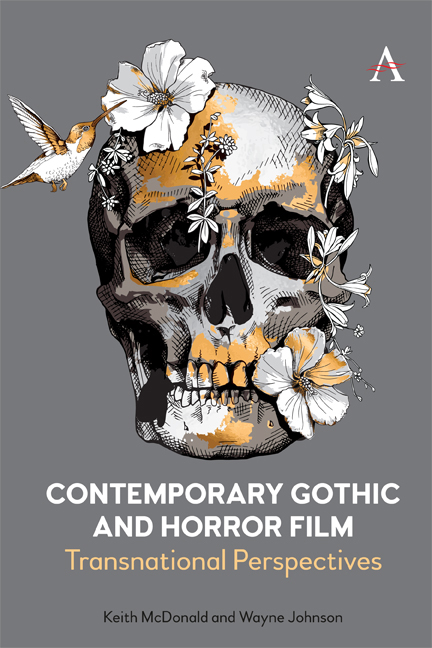Book contents
- Frontmatter
- Dedication
- Contents
- Acknowledgements
- Introduction
- 1 The Gothic Tradition Illuminated on Screen
- 2 Grief Encounters: Ghost Narratives
- 3 Folk in Hell: Rurality in Transition
- 4 Vampire Gothic as Post-Exotic Gloom
- 5 Shock and Awe: Cosmic Horror as Existential Crisis
- 6 De-Composmolitanism: Zombie Horror as Apocalypse
- Coda
- Bibliography
- Index
4 - Vampire Gothic as Post-Exotic Gloom
Published online by Cambridge University Press: 04 June 2021
- Frontmatter
- Dedication
- Contents
- Acknowledgements
- Introduction
- 1 The Gothic Tradition Illuminated on Screen
- 2 Grief Encounters: Ghost Narratives
- 3 Folk in Hell: Rurality in Transition
- 4 Vampire Gothic as Post-Exotic Gloom
- 5 Shock and Awe: Cosmic Horror as Existential Crisis
- 6 De-Composmolitanism: Zombie Horror as Apocalypse
- Coda
- Bibliography
- Index
Summary
It could be any love story. An estranged couple meet up after some years apart […] weary, jaded, exhausted. It emerges that they are vampires, tired of life; not surprising given that they have been around for centuries. This is the simple premise of Only Lovers Left Alive (dir. Jim Jarmusch, 2013), and in much the same vein as the characters in the Anne Rice novel The Vampire Lestat (1985), the vampires have been transposed to the modern era; the narcissistic era of consumption, a post-industrial world free of the hypocritical morality of the Victorian era. Yet there, science and technology had triumphed; now it had waned and all that was left was love and ennui and boredom. According to Lucie Armitt, ‘the traditional monsters of folklore such as the vampire or the werewolf undergo a series of “taming” transformations’ during the course of the twentieth century (153). Catherine Spooner makes a convincing link between traditional and twenty-first century Gothic. The relatively romantic vampires of Stephanie Meyer's Twilight series (2005– 08) and Anne Rice's Vampire Chronicles (1976– 2003) are, according to Spooner, ‘attractive heroes’ (180) who merge into contemporary celebrity culture. Similarly, as Fred Botting has found, ‘where the vampire existed in the shadows of modernity as a destructive, exotic, threatening excess, it now signifie[d] a creature at the heart of the lifestyles and identities of consumer culture’ (Gothic , 188). The vampires in both texts are portrayed as rock stars, as well as being simply customers, where blood is sold as an illicit street drug. However, in the Rice novel, her vampires are ‘models for new and positive associations’ (Jones, Horror , 89). In Jarmusch's film everything is burnt out, even the characters. Detroit is portrayed as a mausoleum for the pitiable hubristic society which created it. Abel Ferrara's The Addiction (1994), featuring Christopher Walken and Annabella Sciorra, is an existential meditation, filmed in stark monochrome, on the nature of human sin and redemption, where human tragedies (Vietnam, the Holocaust) cause nightmares for the chief protagonist. Although the film has obvious religious undertones, the vampire is scientific, through the use of syringes to extract blood; denoting lack of contact in a world of AIDS and drug addiction.
- Type
- Chapter
- Information
- Contemporary Gothic and Horror FilmTransnational Perspectives, pp. 81 - 102Publisher: Anthem PressPrint publication year: 2021



